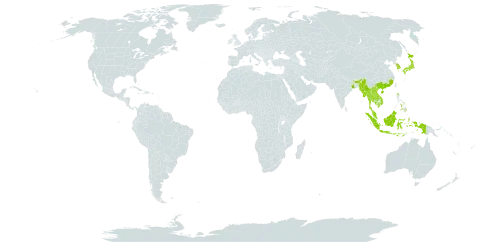Herbs, perennial, 1-4 m. Stems twining, densely pubescent. Leaves pinnately 3-foliolate; stipules small, deciduous; petiole 1.5-4 cm, densely pubescent; stipels usually absent; petiolules 1-2 mm, pubescent; terminal leaflet rhomboid, 1.8-4 × 1.8-4 cm, both surfaces densely pubescent, abaxial surface with red glands, basal veins 3, lateral veins 1-3 pairs, base obtuse, rounded, or subtruncate, apex acute; lateral leaflets smaller, obliquely ovate. Raceme axillary, 1-or 2(-4)-flowered; peduncle 0.5-1 cm, densely pubescent. Flowers 1.5-2 cm; pedicel 2-6 mm, pubescent. Calyx campanulate, pubescent, with golden yellow glands; lobes ovate-lanceolate. Corolla yellow; standard transversely elliptic, longer than wide, base with 2 auricles; wings narrowly elliptic, base with curved auricle at one side; keels very curved, without auricle, apex long beaked. Ovary filiform, pubescent, with orange glands, apex with long beak. Legume linear-oblong, 5-8 × 0.9-1.1 cm, densely pubescent, with orange glands, apex with long beak; stipe 1.5-1.7 cm. Seeds 7-11, black, suborbicular, compressed, ca. 4 mm. Fl. and fr. Jun-Nov.
